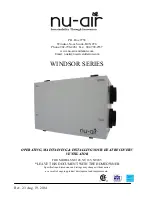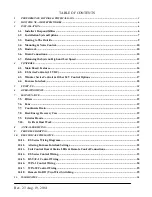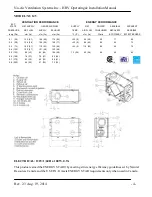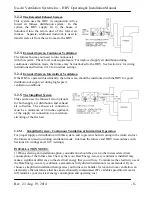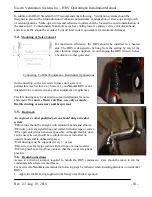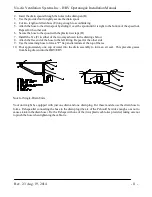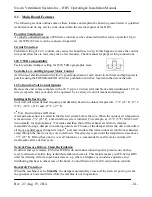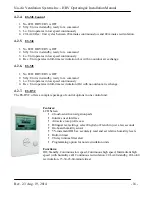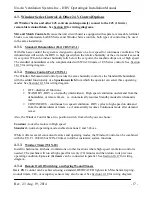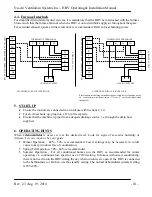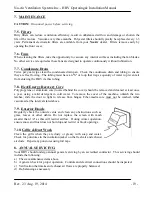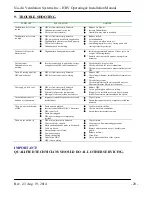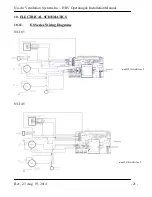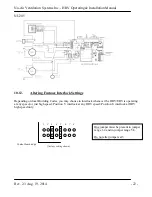
Nu-Air Ventilation Systems Inc. - HRV Operating & Installation Manual
Rev. 2.3 Aug. 19, 2014
- 9 -
2) In cases where the HRV is coupled with a central air handling system, the HRV fresh air supply duct
to the return air plenum shall be connected at a sufficient distance upstream of the plenum connection to
the furnace. This allows proper mixing and ensures appropriate air temperature at the furnace heat
exchanger in cold weather. For fuel-fired mid and high efficiency furnaces a minimum temperature of
15.5º C (60º F) is recommended at the heat exchanger. (Check the furnace manufacturer’s
specifications).
3)
To ensure quiet operation of ENERGY STAR qualified HRV/ERVs, each product should be installed
using sound attenuation techniques, such as using a flexible connector between the unit and the rigid-
pipe supply and return ducts.
4) Installing a user-accessible control with your product will improve comfort and may significantly
reduce the product’s energy use. Most building codes require a centrally located control with an on/off
switch.
3.3.
Ducting to The Outside
Between the weather hoods and the HRV you must use fully insulated ducting with an integrated
vapour
barrier. Insulated ducting with an integrated
vapour
barrier must also be used on all runs
passing through unheated areas. This will help avoid condensation problems and energy losses.
The minimum RSI value of insulation should equal that of the local building codes.
3.3.1.
Weather Hood Installation
1.
Insulated flex duct slides over the
galvanized sleeve of the weather hood.
2.
Use sheathing tape (red) to join the inner
duct to the hood's sleeve.
3.
Tape the
vapour
barrier to back of the hood
without compressing the insulation. Caulk
or foam seal around the collars and hoods to
eliminate air and water leaks.
4.
Locate the hoods for easy access to the bird
screen for cleaning purposes.
5.
Be sure to use exterior sealant along the top
and side edges of the hoods, tooling the
sealant to ensure a good seal.
Make the insulated duct that connects the weather hoods to the HRV as short as possible to minimize
airflow restrictions. Avoid sharp bends and stretch out the inner lining of the flex duct as much as
possible to reduce static pressure and maximize airflow. For runs over 12’, increasing flex diameter 1”
to next size up will reduce pressure drop in the duct.
3.3.1.1.
Locating the Weather Hoods
There should be a minimum of 6’ (feet) of separation between the fresh air and exhaust hoods. Supply
hoods should be a minimum of 18” (inches) above the ground level. Exhaust hoods should be at least 4”
(inches) above the ground level. Holes through the wall should be 1” larger than the collar on the hood,
to allow for insulation. Fresh air hoods must be 3’ away from any other appliance exhaust vent or
furnace vent.

